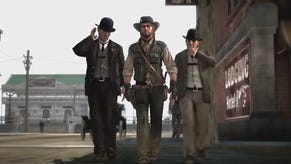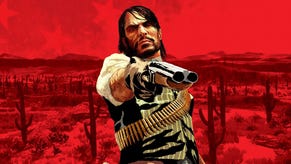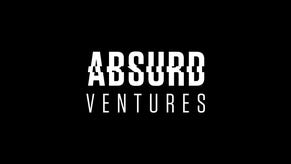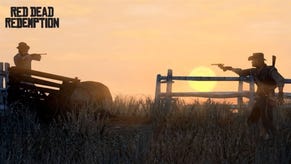Face-Off: Red Dead Redemption
And the West.
| Xbox 360 | PlayStation 3 | |
|---|---|---|
| Disc Size | 6.7GB | 7.67GB |
| Install | 6.7GB (optional) | 515MB (mandatory) |
| Surround Support | Dolby Digital | Dolby Digital, 5.1LPCM |
The arrival of Red Dead Redemption sees Rockstar return to the realms of the big-budget gaming blockbuster, and how - it's top of the charts and a critical darling. Just like the legendary Grand Theft Auto IV, it's an immense, fully-realised open world backed up by masses of content and an accomplished script.
Regular readers of Digital Foundry will know that the original GTA IV showed clear performance advantages in its Xbox 360 guise. But does the same hold true for what some consider its spiritual sequel?
The technology behind the game is Rockstar's proprietary RAGE engine, which has been utilised for a great many of the company's releases, including GTA IV. The recent Episodes from Liberty City were built upon the same framework, and while hardly conclusive, according to our comparison back in Face-Off Round 25 it seemed to be the case that the performance advantage enjoyed by Xbox 360 was not so pronounced.
So how does Red Dead Redemption fare? There's a comparison gallery with over 50 shots to check out, along with the requisite Face-Off video:
Let's talk image quality. It will come as no surprise to anyone to discover that the basic make-up of the framebuffer in both PS3 and Xbox 360 versions of Red Dead Redemption is essentially identical to what we've seen in GTA IV and its episodic offshoots.
This entails a full 720p resolution on Xbox 360 along with 2x multi-sampling anti-aliasing. PlayStation 3 on the other hand renders at a significantly lower resolution: 1152x640, with a very selective implementation of the blur-inducing quincunx anti-aliasing.
Quincunx anti-aliasing and sub-HD resolutions are rarely attractive bedfellows, but in direct comparison with Xbox 360, it transpired that GTA IV had something of an individual look about it. Blurred? Yes. Unattractive? Not really; certainly not in comparison to the 360 build. This was in part owing to a strange dithering effect applied to the textures on Xbox 360 only, which stippled some artwork and applied an odd watercolour-effect to the screen.
In Red Dead Redemption, this effect is gone or at least massively reduced, meaning that the gulf in picture quality between the two versions is more readily pronounced. There's no doubt about it: just in terms of the basic aspects of the image, there's little doubt that the 360 version presents more resolution and more detail, and this is rather more important than it would be in many other games.
Hopefully these two comparison images will help explain why. In the first image we're indoors, and while the "jaggies" are a bit more pronounced on PS3, the resolution differential doesn't really make an enormous difference in-game.
However, in the second set of shots we can see that Red Dead Redemption likes to present us with vast areas of landscape and an impressively long draw distance. Essentially, the further away detail is, the more you "lose" on PS3 as there isn't as much resolution to support it.

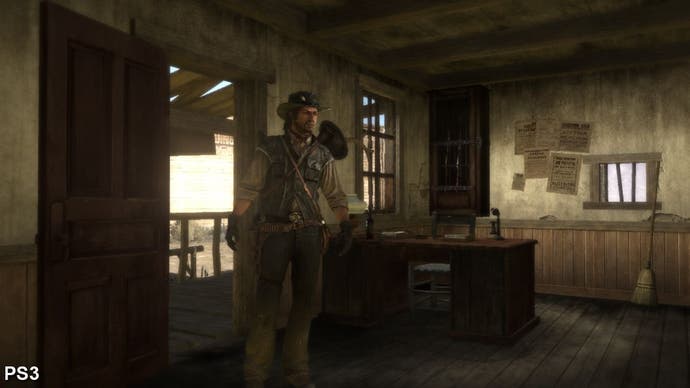
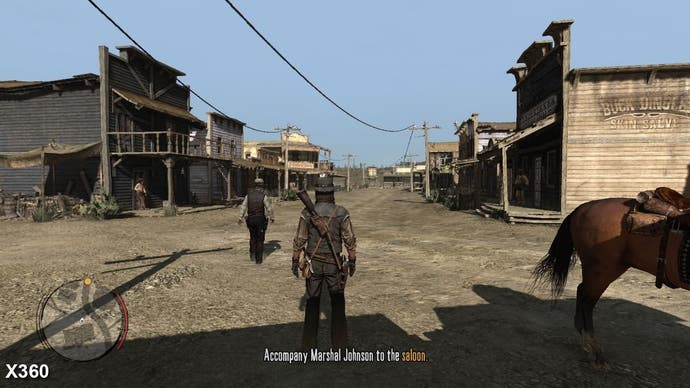
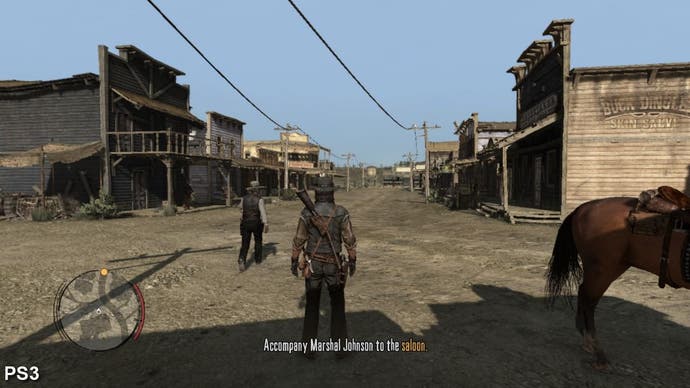
Performance is interesting. In GTA IV we saw a considerable advantage to Xbox 360. Although frame-rates hovered around and below 30 frames per second, we could also see the occasional spike beyond 40FPS, suggesting Rockstar ran the game with an unlocked frame-rate. PS3 was capped at 30FPS. While both games were prone to dropping frames badly, PS3 suffered more - something that appeared to have been addressed a tad in the episodic semi-sequels.
In addressing the performance of Red Dead Redemption we went for two separate tests. The first was a complete analysis of the initial intro. In these scenes we should in theory be seeing both PS3 and 360 titles in exact like-for-like conditions, with the same lighting (as time-of-day should be locked).
By and large we see that both games are capped at 30 frames per second, but it's the PlayStation 3 version that is more prone to dropping below this. However, it is interesting to note that there are some key scenes, usually involving higher-LOD characters on-screen simultaneously, that can see the 360 dropping more harshly, accompanied by some screen-tear.
Similar to GTA IV, screen-tear is only found on 360 and is virtually unnoticeable, always at the top of the screen. It suggests that the RAGE engine still commands an overall performance advantage on 360 in addition to a higher resolution.
The second performance test brings us into actual gameplay. Not like-for-like, but derived from the same parts of the same missions.
It would appear that the horse-riding sections that punctuate missions are equally smooth on both systems, but in terms of general gameplay during the all-important missions, where we have a range of characters in play, we see that the Xbox 360 sticks pretty well to the 30FPS target frame-rate, while the PS3 can fall short.
Despite already compromising in terms of resolution and frame-rate, it's clear Rockstar had to cut and pare back the PS3 version of the game still further in order to maintain performance. We can see a fairly obvious array of smaller changes between the two versions that almost always favour the 360 rendition of the game.





